Timber Tales: Lumbering and lumber camps
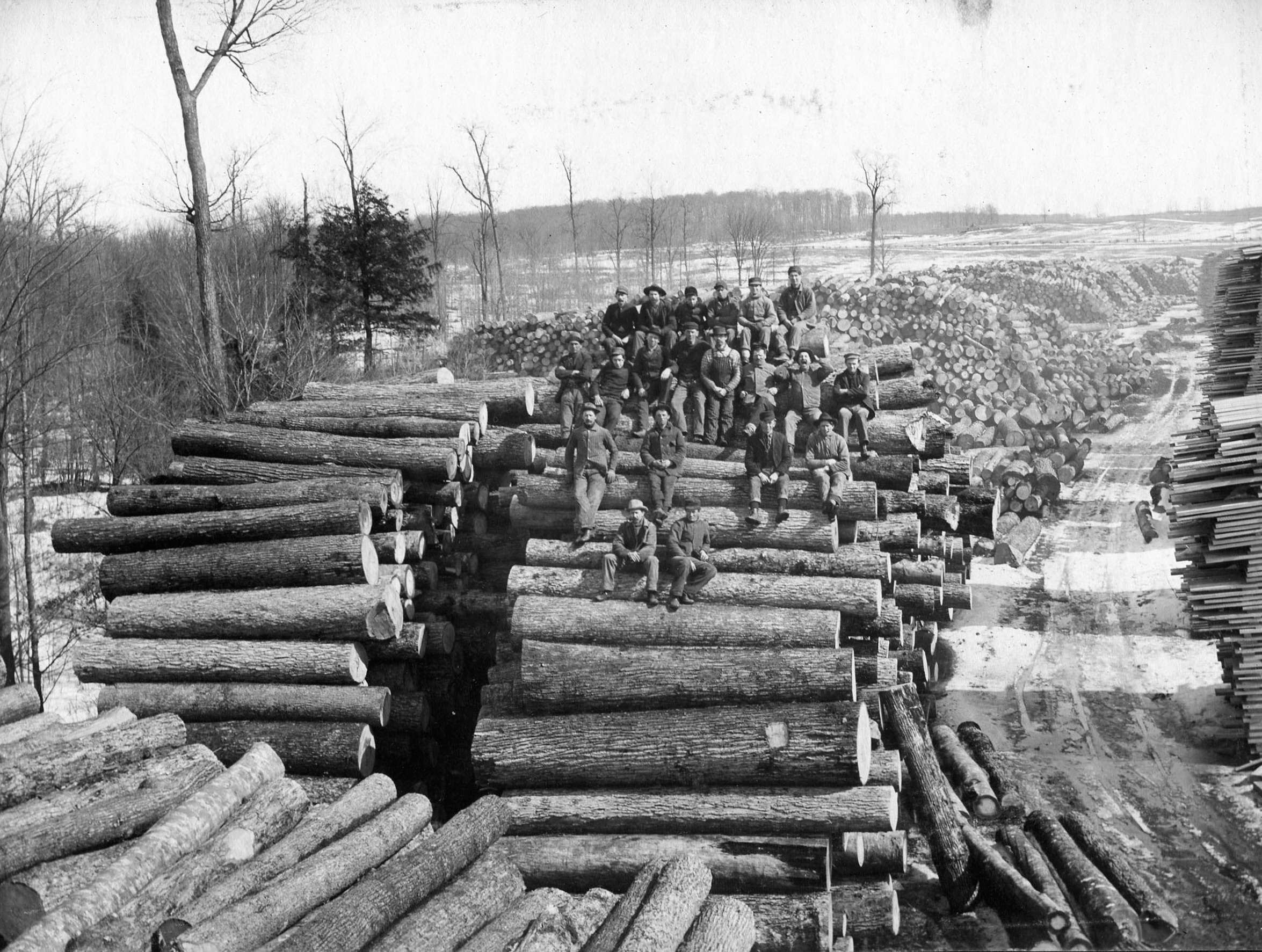
We often think of Michigan as a manufacturing powerhouse, but before that it was a major source for the raw materials that nineteenth-century America needed most: copper, iron, salt, and especially lumber.
Pine trees, especially white pine, were the most valuable because they were the best for making furniture, being relatively lightweight and easy to work. Early surveyors estimated there could be 150 billion feet of pine wood in Michigan, but the final number turned out to be much higher.
Most of the wood harvested in the United States during the early nineteenth century came from forests along the East Coast, especially in Maine. But by the 1840s, lumber companies were looking for new sources of wood, and many of them moved their operations to Saginaw Bay. Rivers flowing into the bay gave the logging companies access to hundreds of miles of forest, and Saginaw became a major center for lumber by the 1850s. On the western side of the state, Muskegon became an even larger hub, and as Willis Dunbar notes, “second only to Chicago among Lake Michigan ports” (p 340).
Logging in the mid-nineteenth century was limited to winter months, when sleds could carry logs over a thick layer of snow to the nearest river. Then in the spring, when heavy rainfall made the rivers rise, teams could guide logs downstream to sawmills built near the rivers' mouths. This was called "booming." When a team reached a sawmill the men organized the logs into storage "booms," using a "log mark" carved into the end of the log to identify which company owned it.
The companies built camps deep in the woods with a cook shanty, a bunkhouse, and other buildings such as a barn, blacksmith, carpentry shop, and company store. Many lumberjacks were from southern Michigan. Others came to the state from Maine or New York, or from much father away: Ireland, Sweden, Norway, or Finland.
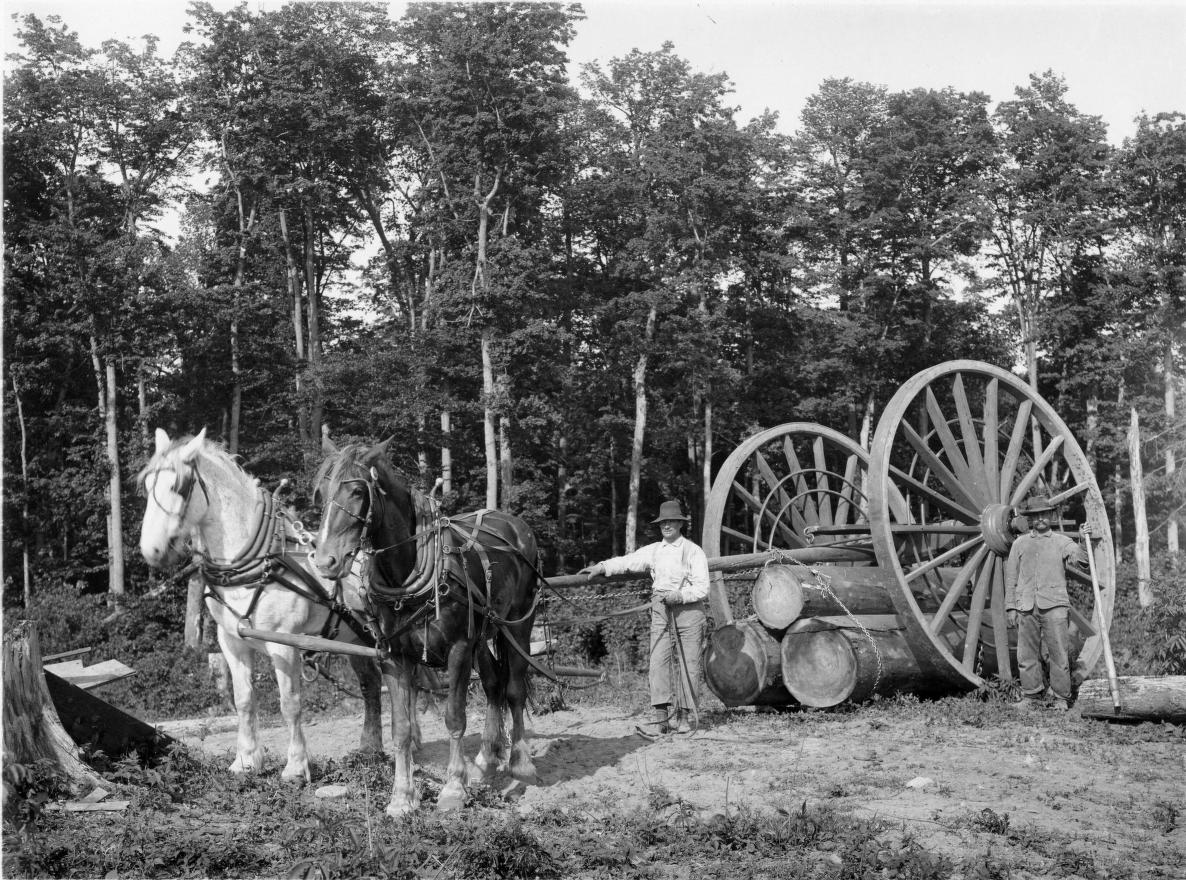
Logging changed dramatically from the 1850s to the 1870s thanks to new technology. Railroads dramatically expanded the reach of the logging companies and allowed them to cut trees year round. Improvements in crosscut saws made them more efficient than axes, and eleven foot-tall Big Wheels, invented by Cyrus Overpack, could transport logs over land without snow. Sawmills transitioned from water power to steam power, and band saws with thinner blades produced less sawdust and lost wood.
These and other innovations allowed the logging companies to cut ever greater numbers of trees, reaching 4,292,000,000 feet in 1888, according to Dunbar (p. 350). Production fell after that, and the lumber companies moved on to the Pacific Northwest, but lumbering would continue in Michigan for decades.
Cutting methods had a severe impact on the landscape of Michigan, and the practice of leaving rejected wood behind created a serious risk of fires. The year 1871 is remembered for the Great Chicago Fire, but dry weather and waste wood sparked fires in Holland, Manistee, and other Michigan towns that year. Counties in the Thumb suffered even worse fires ten years later. The departure of the lumber companies also made it difficult for small lumber towns to survive. Some hoped agriculture might replace logging, but clearcut land was not well-suited for farming (though the Michigan Agricultural College, which became Michigan State University, would pioneer new crops and farming methods for the state in the twentieth century). Restoring the land would be the work of reforesting and conservation in years to come.
Below are some other photographs related to Michigan's lumber industry. Next to each caption you will find a link to the complete record on the website of the cultural institution that shared the photograph with Michigan Memories. You may find more information and context about the photograph there.
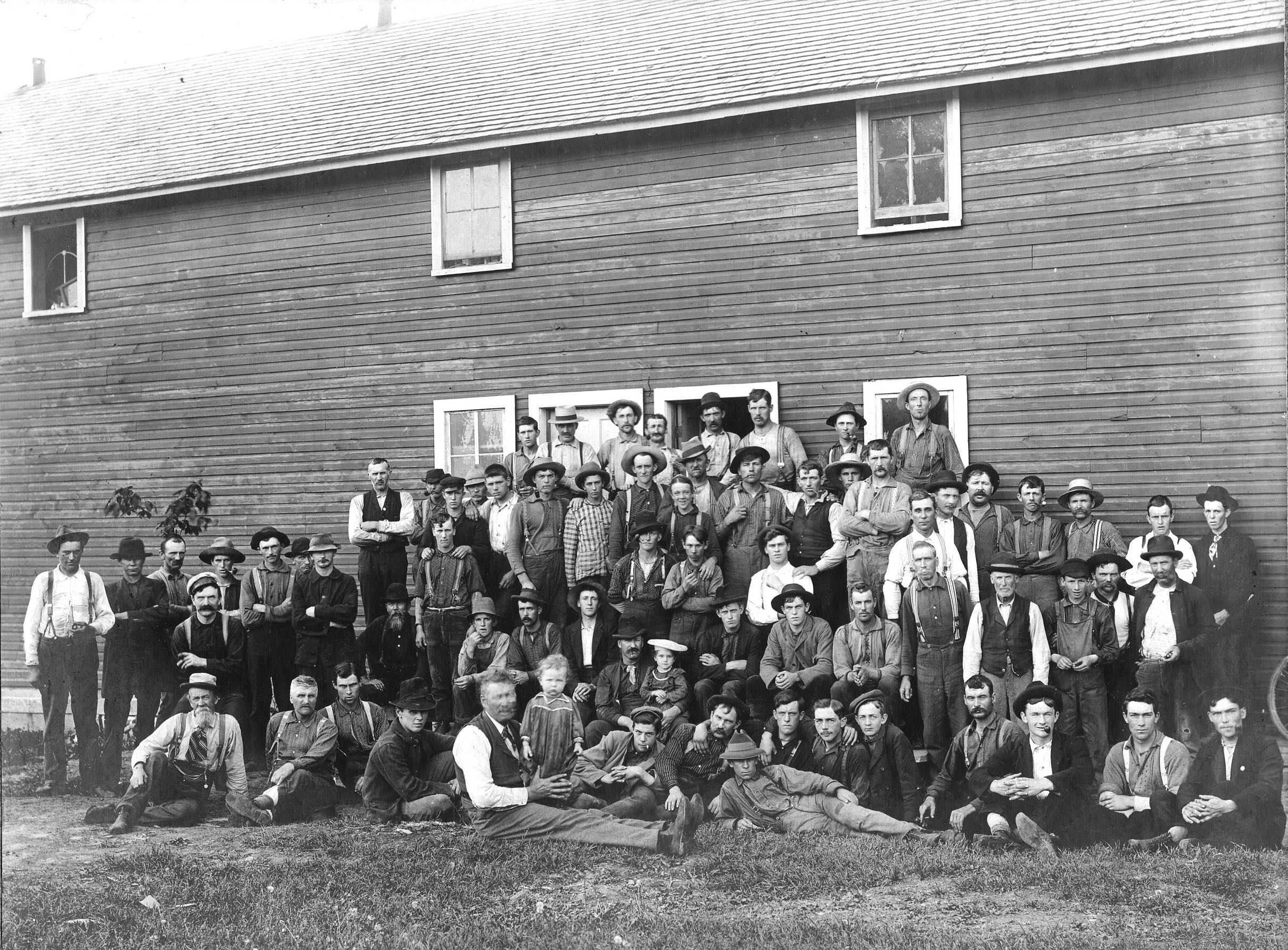
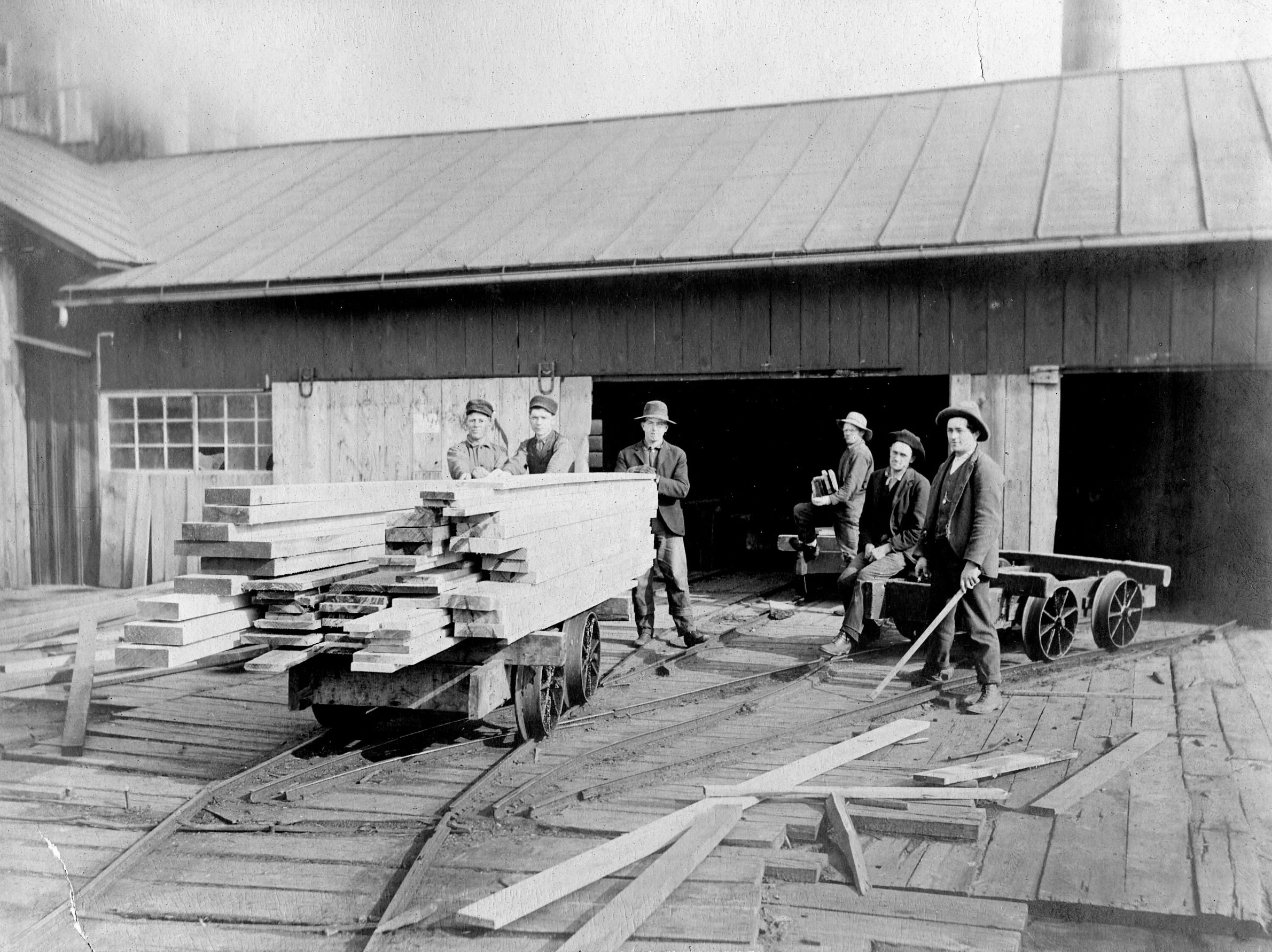
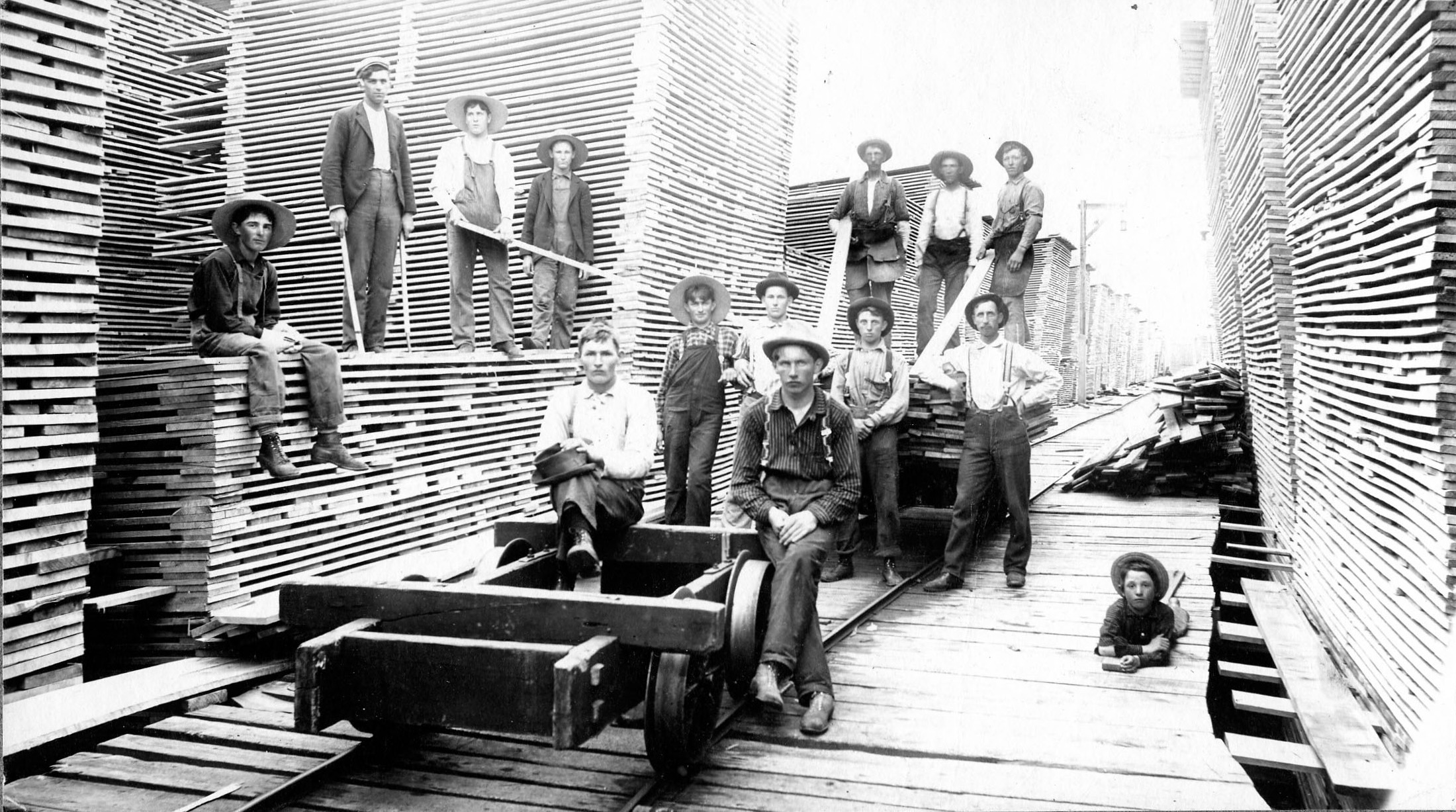
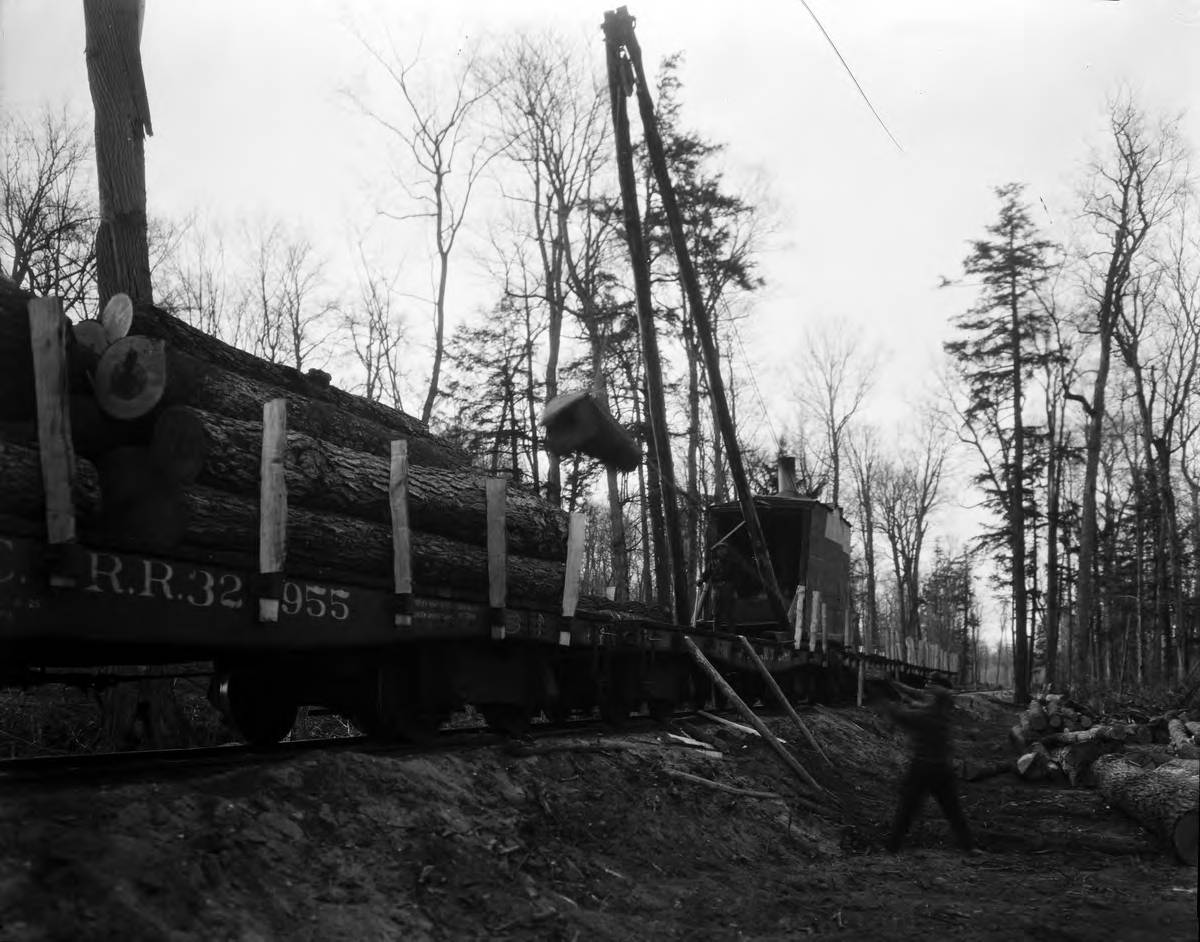
In Lumbering in Early Twentieth Century Michigan, Herman Miller identifies the crane-like machine in the background as a "slide back steam loader." The loader lifts the log and the two men on the right use ropes to guide the log unto the stack of lumber on the flatbed car (pp. 47-48).
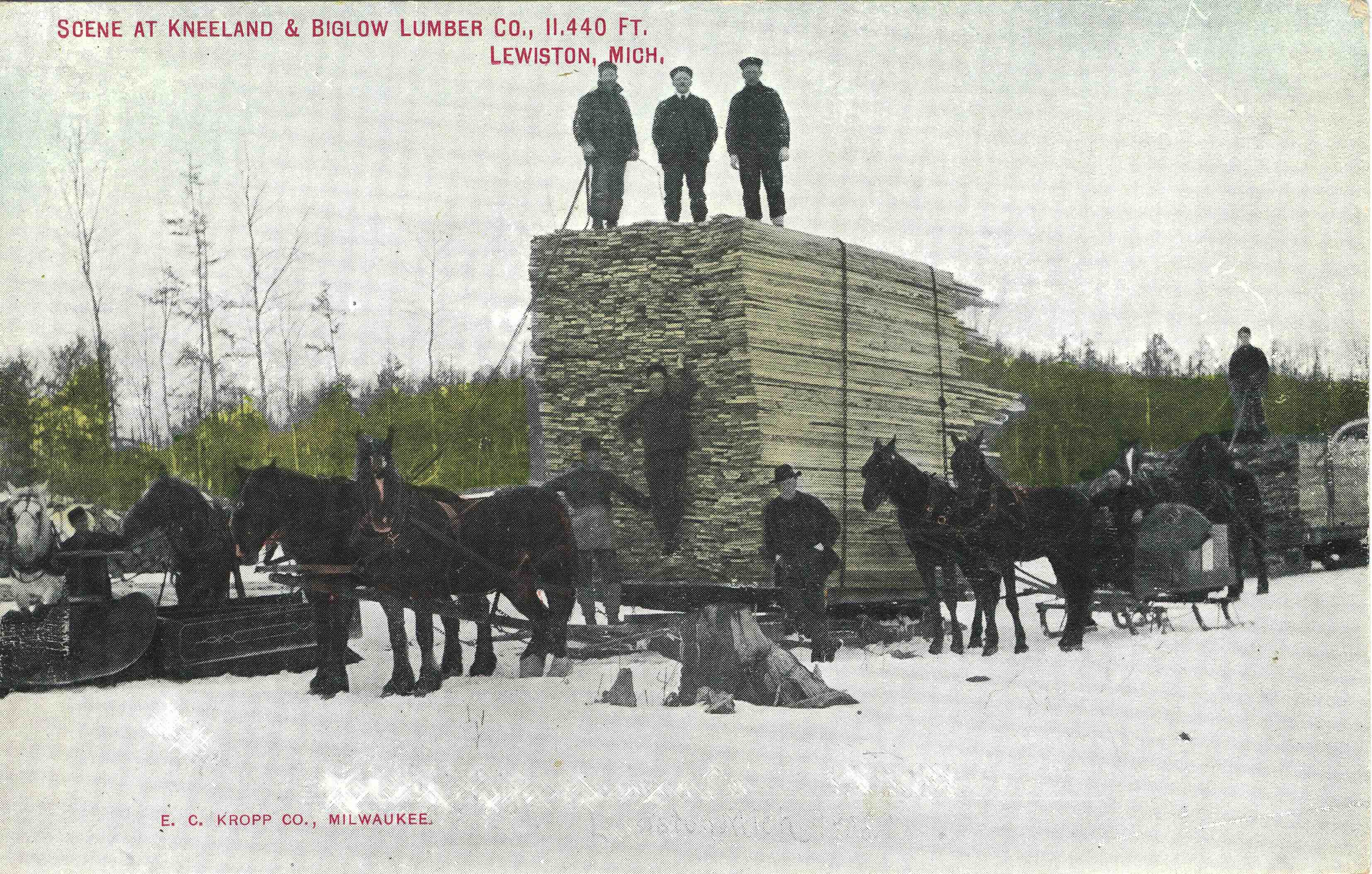
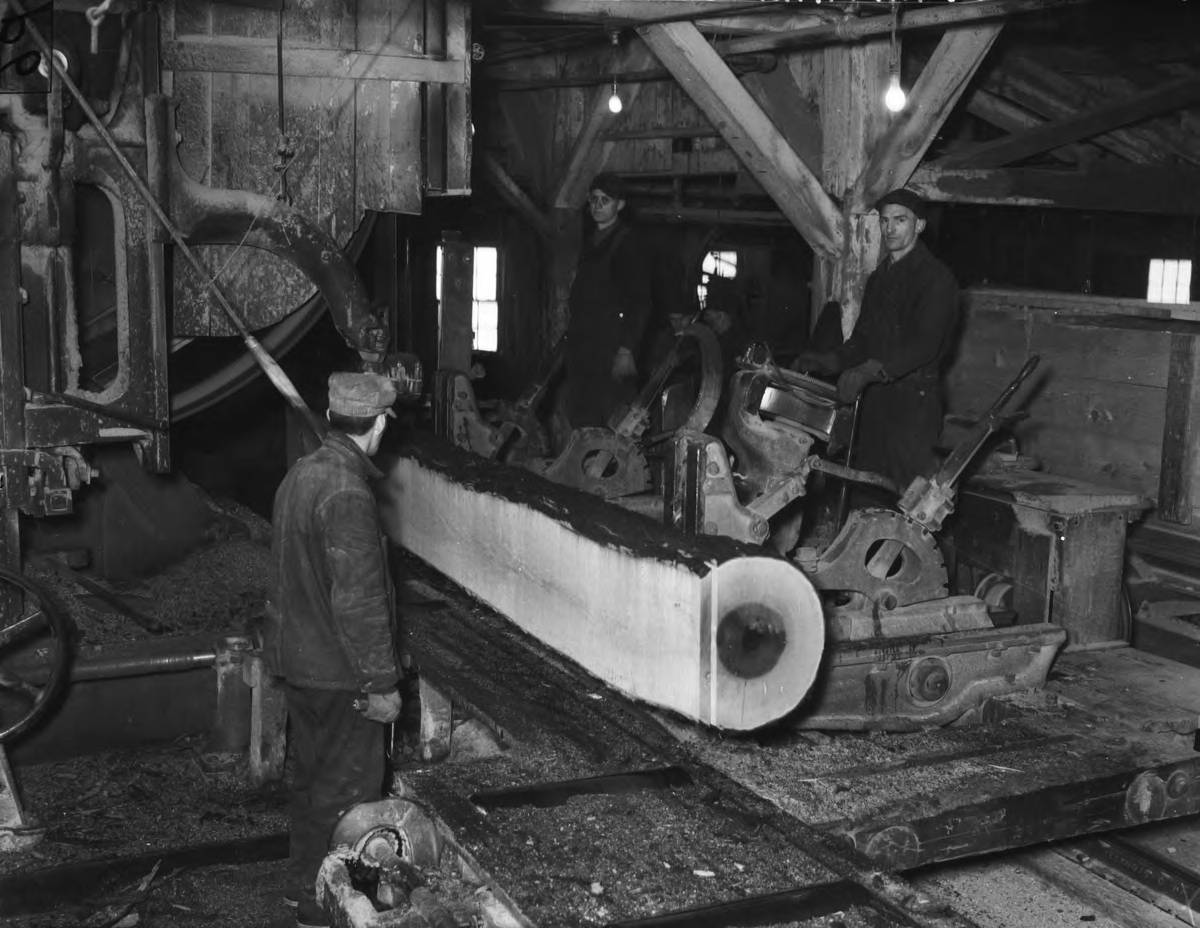
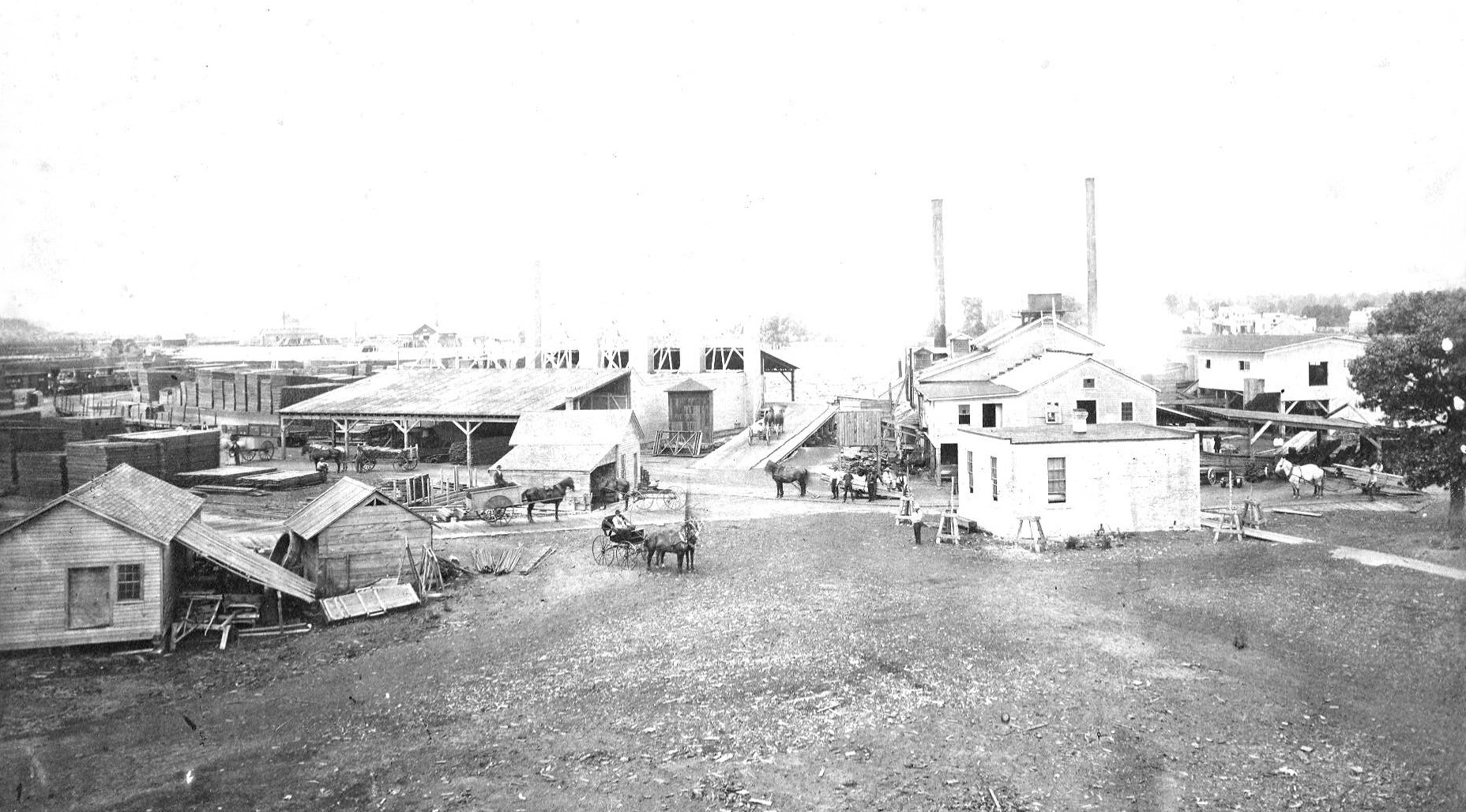
In 1874 Cutler and Savidge was processing 50,000,000 board feet of lumber per year. Much of the timber came from land on the Rogue and Flat Rivers.
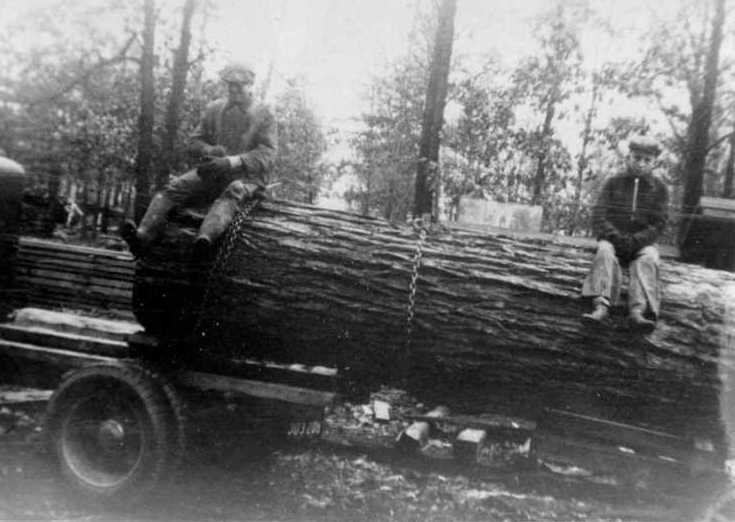
Just one example of how large the logs could be!
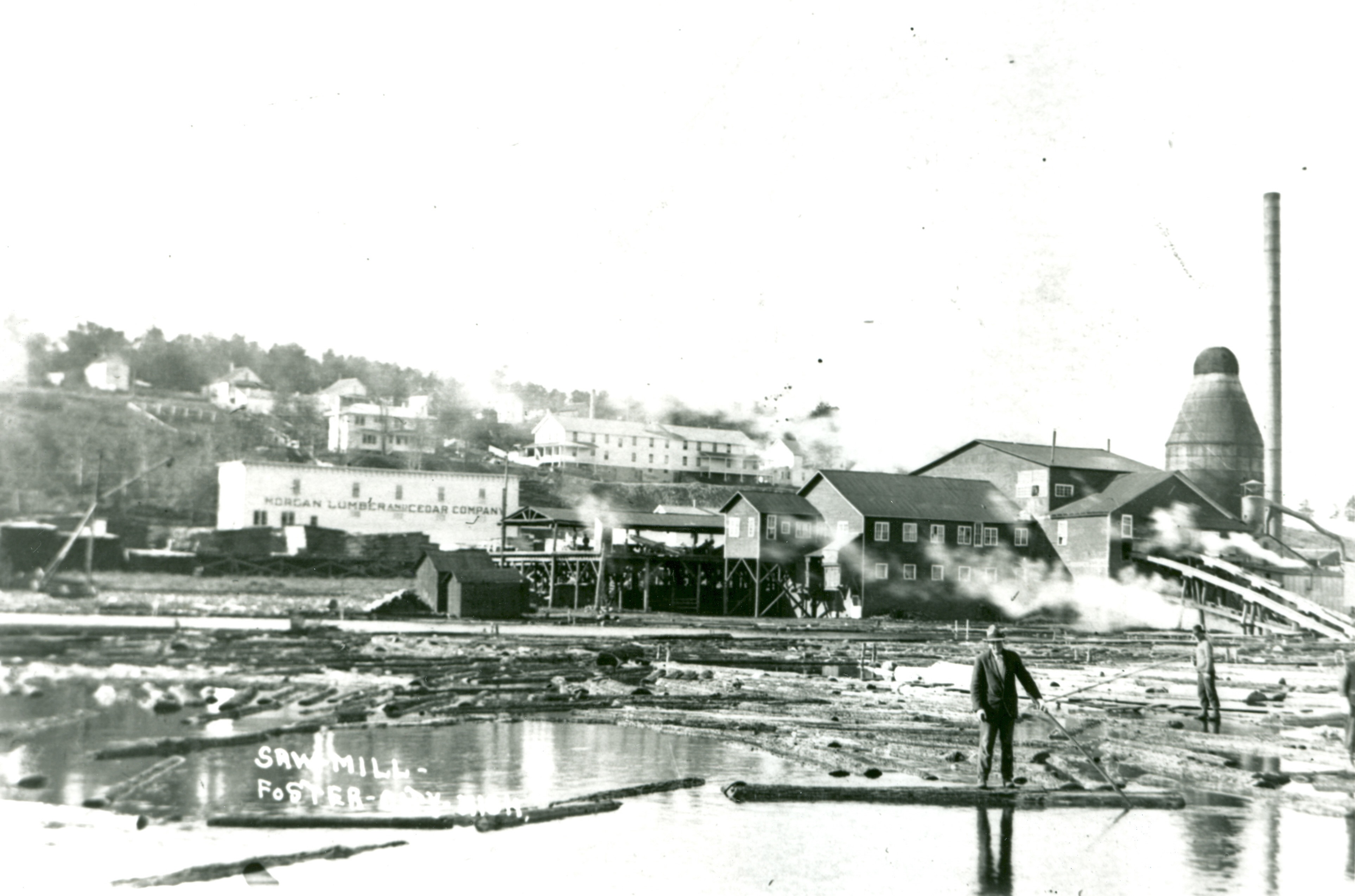
The Morgan Lumber and Cedar Company's sawmill was in Foster City, Michigan. The bulidings in this photograph from 1910 include a sawdust burner (the tall, circular building on the right), a company store, and a bunkhouse.
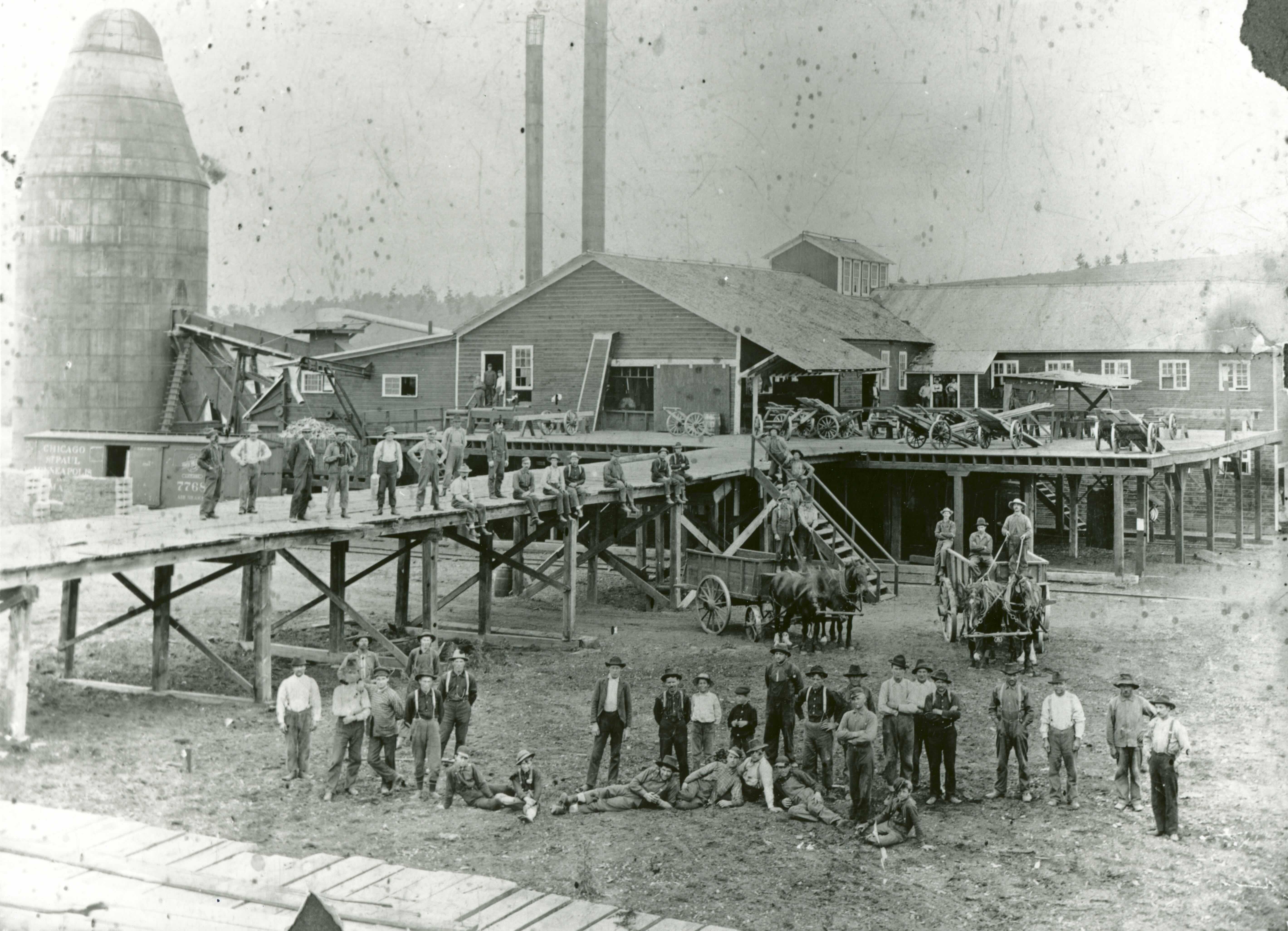
Another photograph of the Morgan Lumber and Cedar Company's Foster City sawmill, this time in the early spring of 1905.
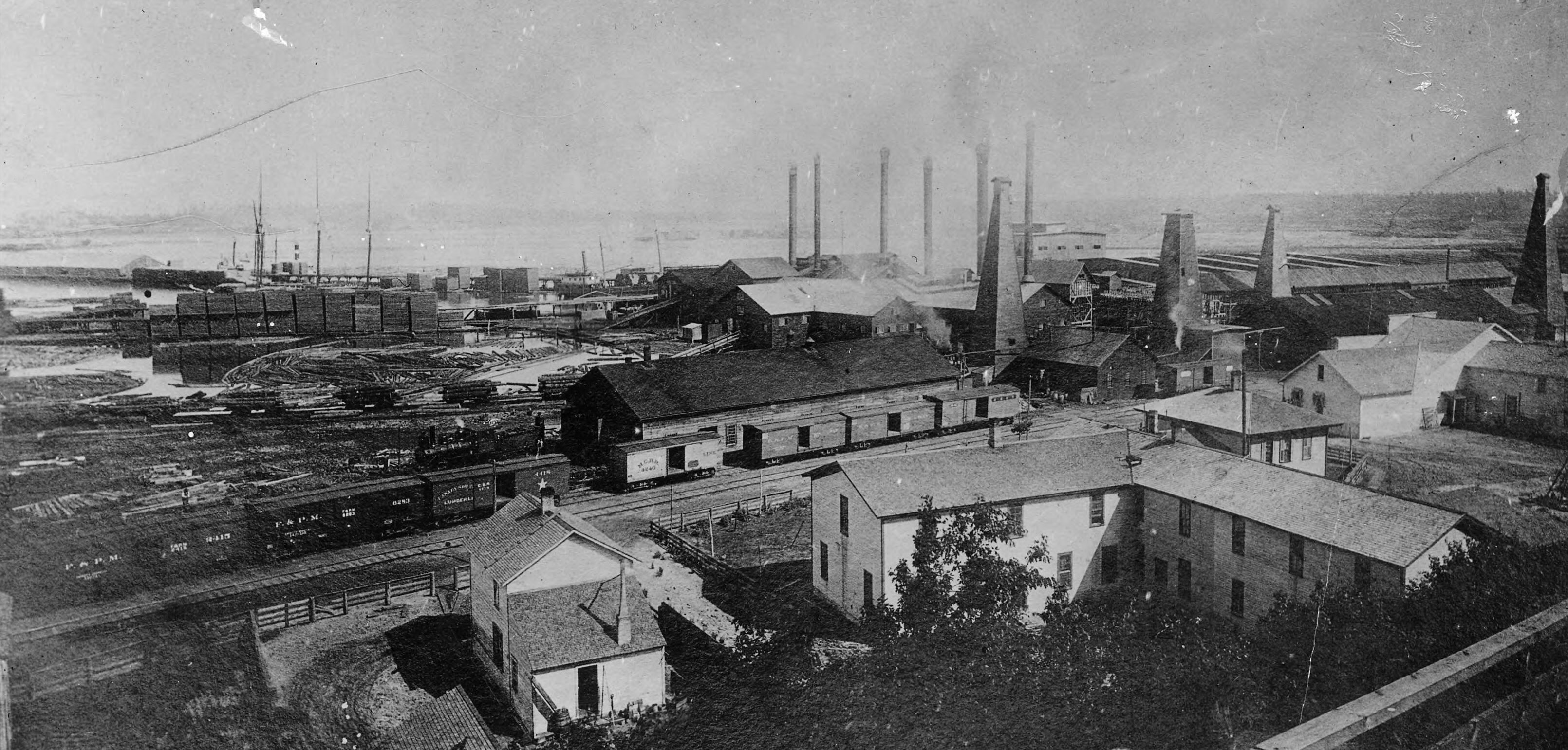
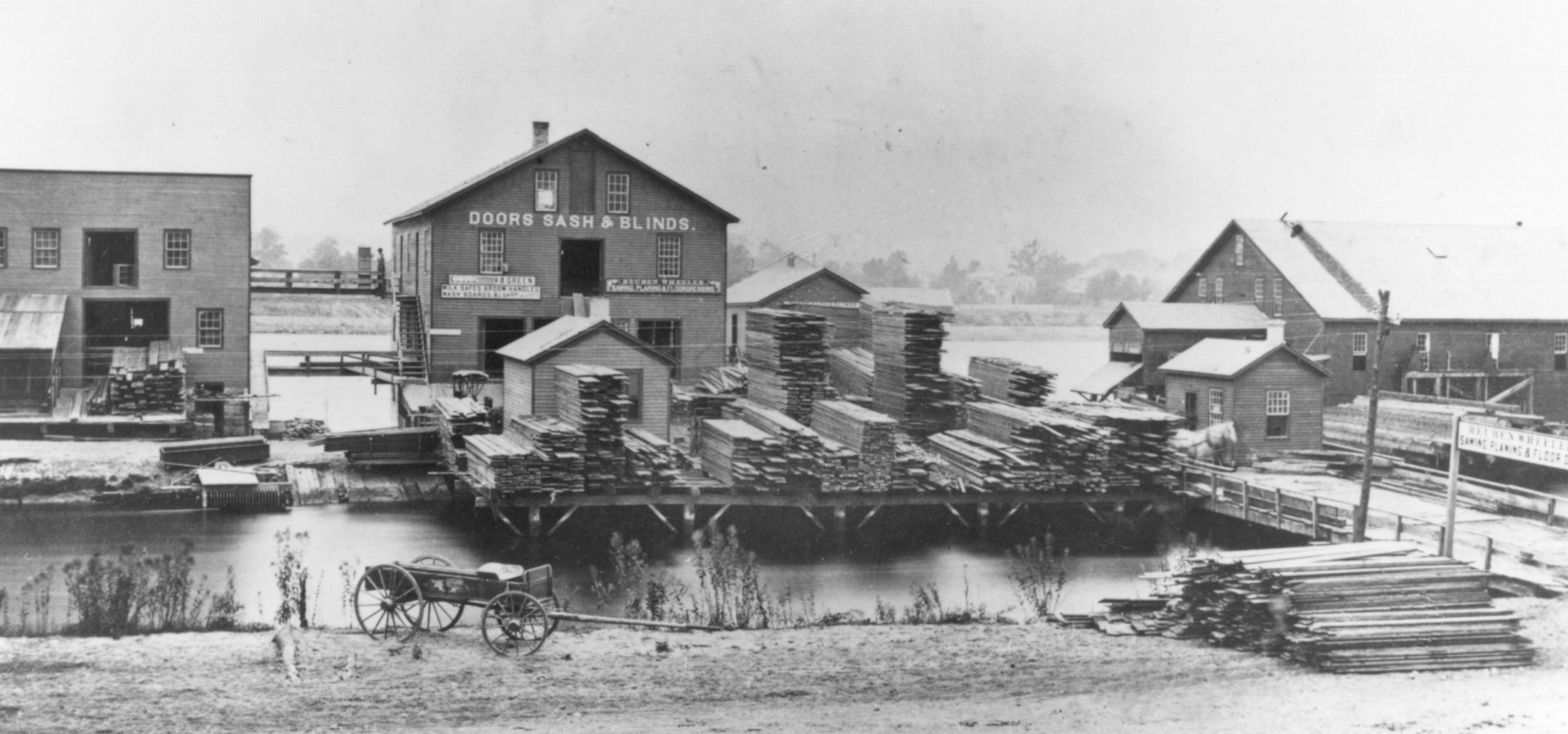
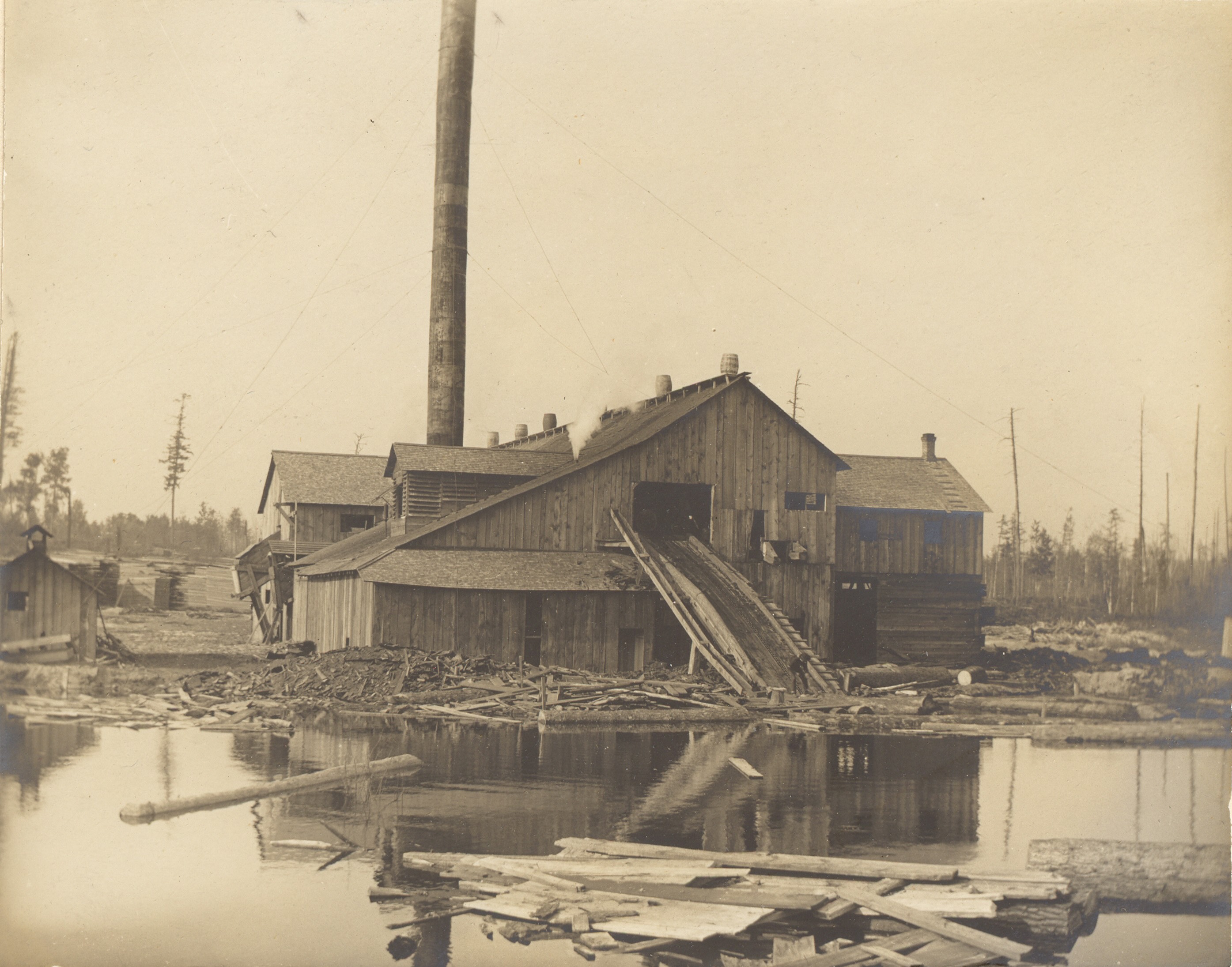
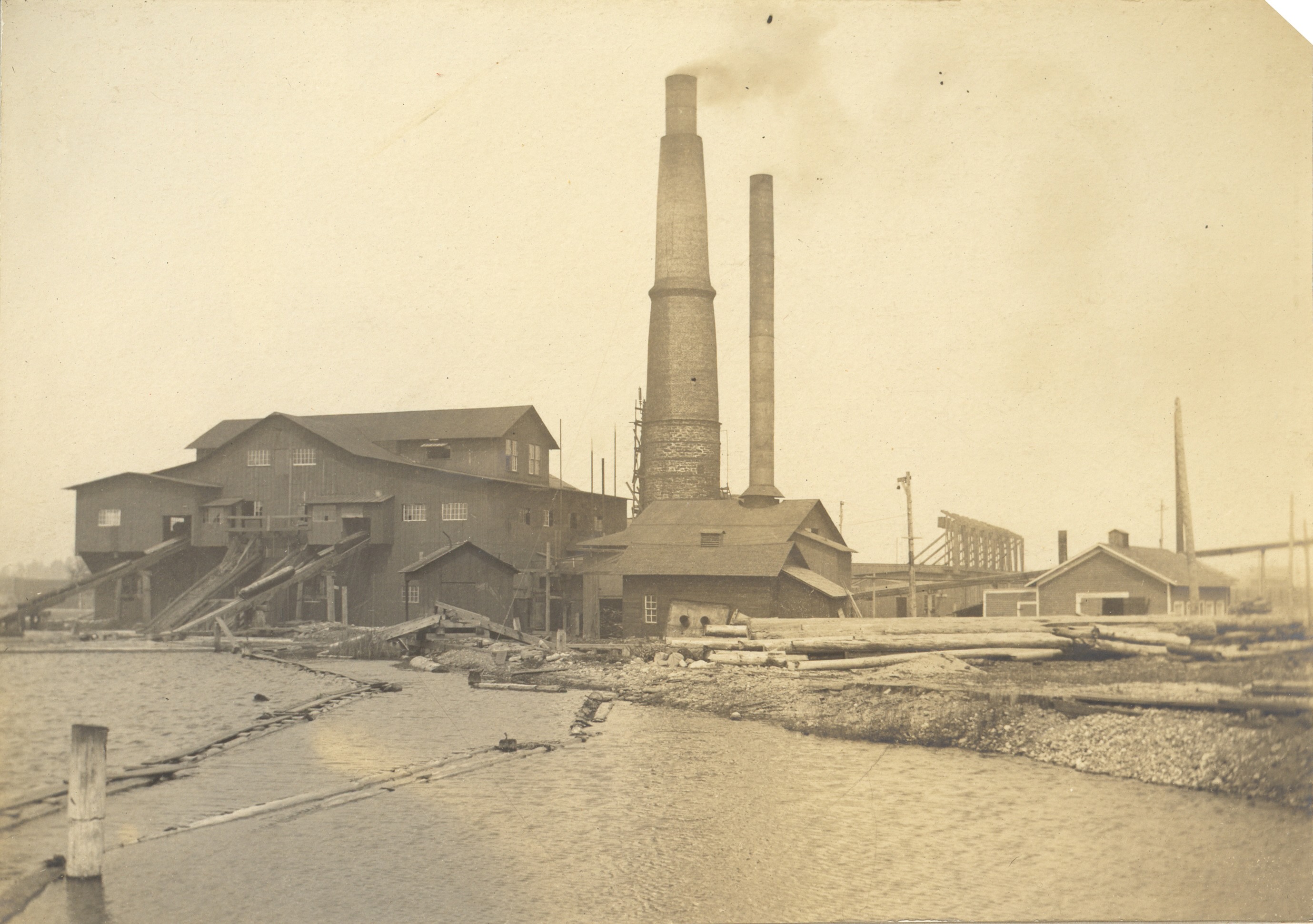
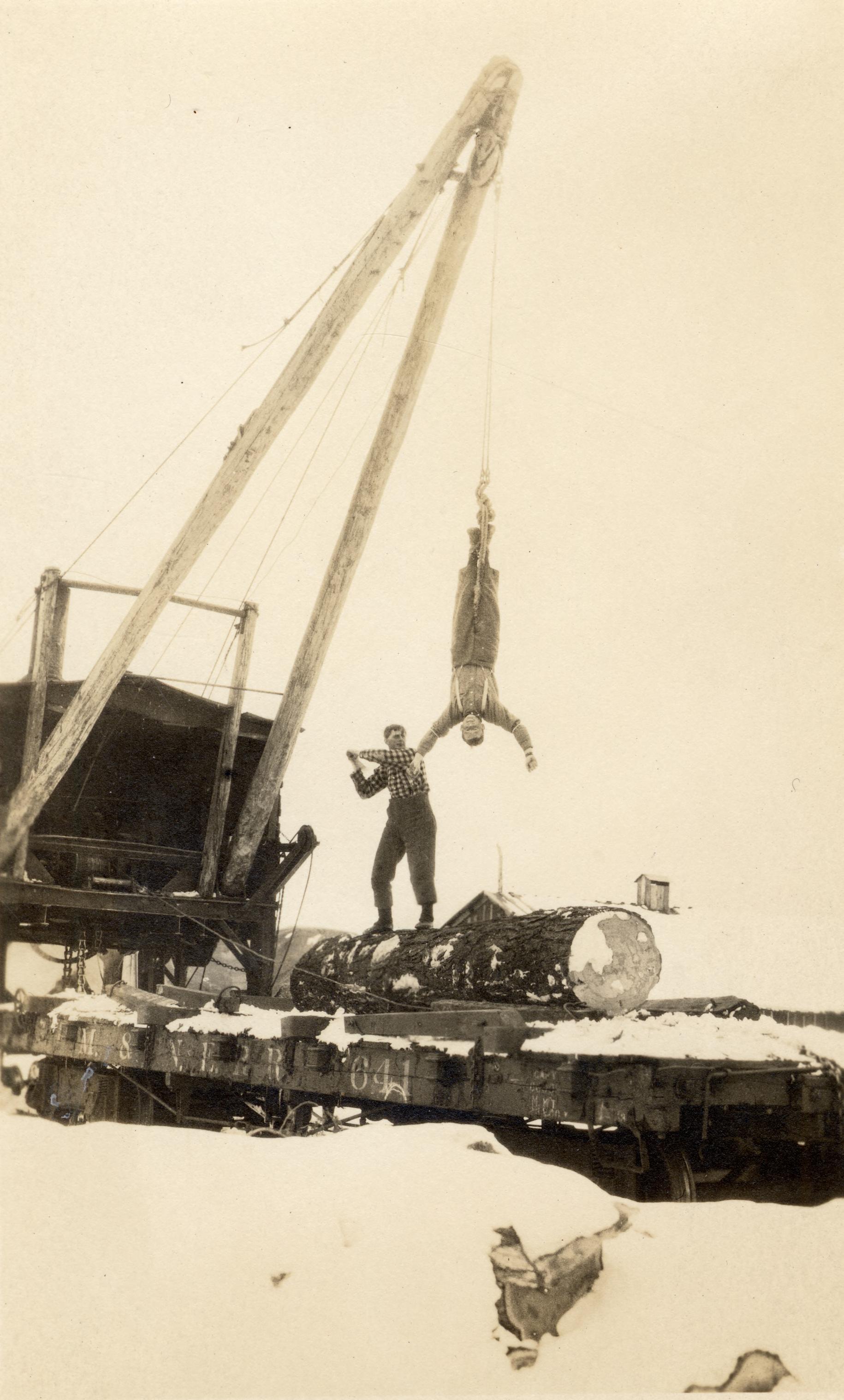
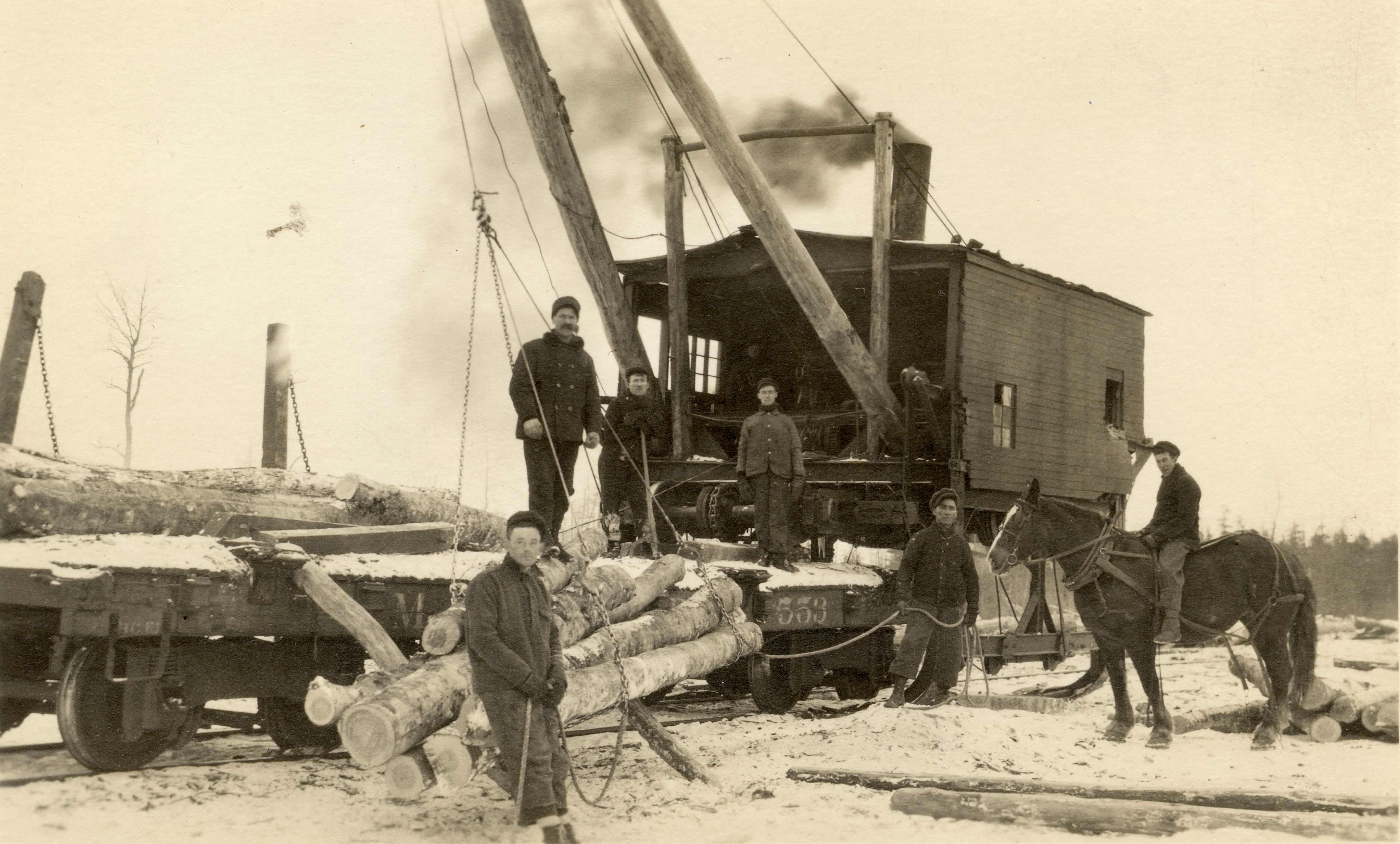
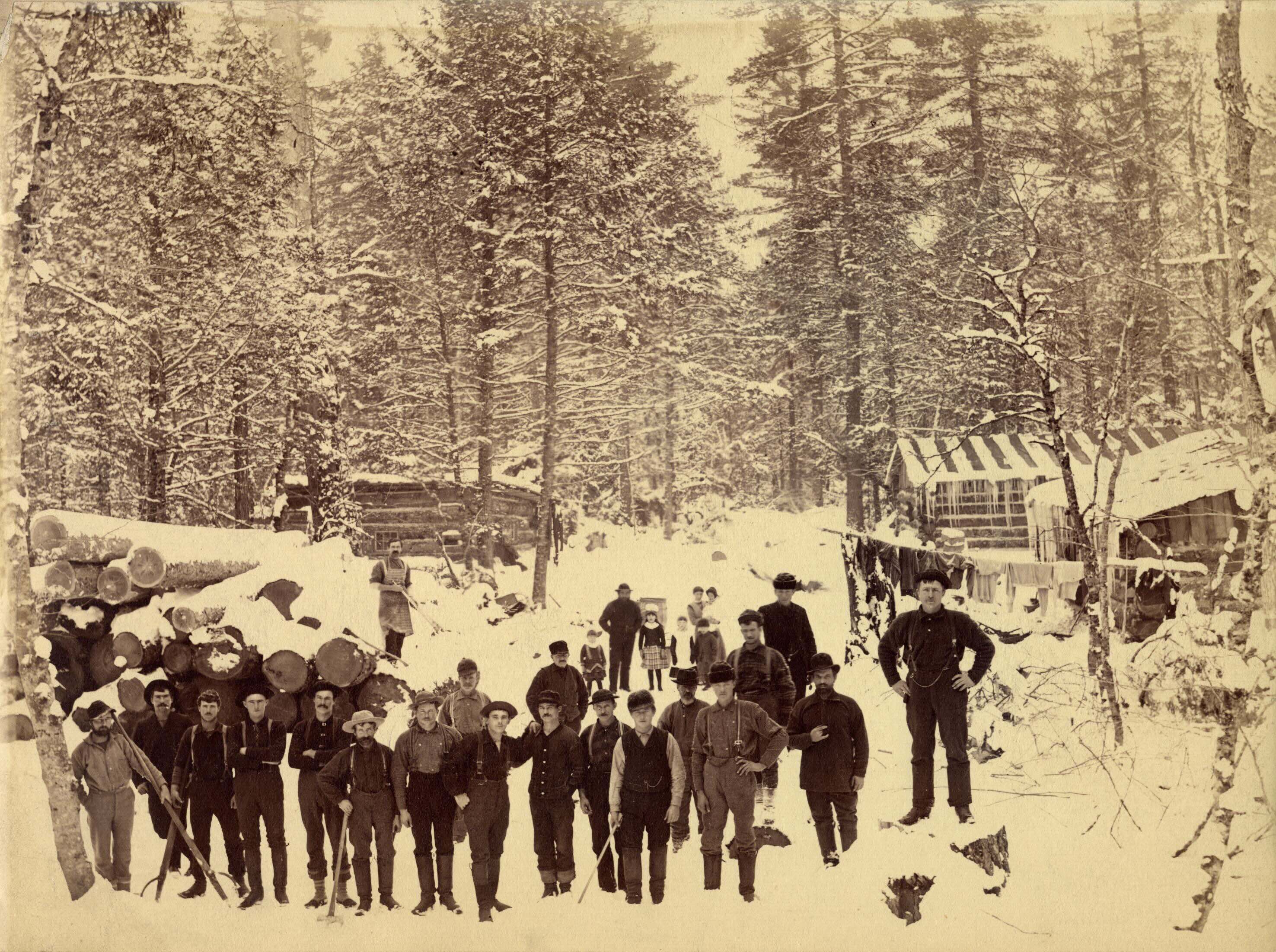
The three images below show various "log marks" that were hand drawn by Lewis Torrent. Logging companies used marks like these, carved into the end of logs, to identify which logs belonged to them. The log marks here were used by owners on the Muskegon River during the 1870s.



References
There are many sources about the lumber industry in Michigan. Some are available online, but many more records about logging companies and logging camps can be found in libraries and archives around the state, including the Bentley Historical Library at the University of Michigan; the Clarke Historical Library at Central Michigan University; and the University Archives and Historical Collections at Michigan State University.
Some notable books about Michigan's lumber industry include:
Dunbar, Willis F and George S May. Michigan: A History of the Wolverine State, third revised edition. Grand Rapids: Eerdmans, 1995.
See especially chapter 17, "The Heyday of the Lumber Industry" (pp. 338-351), which covers the period from early logging in the Saginaw area to the disastrous fires in Chicago and Michigan in 1871. The chapter also offers details about notable lumber companies, life in the lumber camps, and some of the technological innovations that transformed logging during that period. Online sources about the lumber industry in Michigan often draw on this chapter (including this one).
Magnaghi, Russell, M. Upper Peninsula of Michigan: A History. Maquette, MI, 2017.
See especially chapter 16, "Timber Times" (pp. 92-103) which offers details about logging in the UP, including company profits and production statistics; life in the lumber camps; and logging tools and methods.
Miller, Herman Lunden. Lumbering in Early Twentieth Century Michigan: The Kneeland-Bigelow Company Experience. Lewiston, MI: Walnut Hill Press, 1995.
A detailed look at one particular company, with an emphasis on the tools and methods the company used, including several photographs and pages from trade catalogs of the era.
Sources
The images above come from the following collections:
"Slocum's Grove, Muskegon County. Logs at Winchester Mill. Circa 1895." In the collection Grand Rapids Public Library photographs collection (coll. 054) - Grand Rapids History Center. https://digital.grpl.org/Detail/objects/10721# Accessed January 16, 2025.
"Lumbering-Johannesburg, MI: "The big wheels loaded" [#87]; HS4512." In the digital collection Bentley Historical Library: Bentley Image Bank. https://quod.lib.umich.edu/b/bhl/x-hs4512/hs4512 University of Michigan Library Digital Collections. Accessed January 16, 2025.
"Logging, lumbering" ("Group portrait of men in front of a building identified as the Sleeping Shanty. Slocum's Grove, Winchester Mill, Muskegon County. Circa 1895.") In collection Grand Rapids Public LIbrary photographs collection (coll. 054) - Grand Rapids History Center. https://digital.grpl.org/Detail/objects/10720 Accessed February 7, 2025.
"Lumber" ("Six men with four-wheeled carts on rails with a pile of lumber at a sawmill.") In the collection Grand Rapids Public LIbrary photographs collection (coll. 054) - Grand Rapids History Center. https://digital.grpl.org/Detail/objects/10661 Accessed February 7, 2025.
"Lumber" ("Group of men, some sitting on four-wheeled carts on rails, among piles of lumber at a lumberyard.") In the collection Grand Rapids Public LIbrary photographs collection (coll. 054) - Grand Rapids History Center. https://digital.grpl.org/Detail/objects/10662# Accessed February 7, 2025.
"Lumber Industry" (Man throwing a log onto a railroad car). In the collection Detroit News Photograph Collection (UAV002691), Walter P. Reuther Library, Wayne State University. https://cdm17409.contentdm.oclc.org/digital/collection/vmc/id/27967 Accessed April 5, 2024.
"Scene at Kneeland and Bigelow Lumber postcard; HS4707." In the digital collection Bentley Historical Library: Bentley Image Bank. https://quod.lib.umich.edu/b/bhl/x-hs4707/hs4707 University of Michigan Library Digital Collections. Accessed February 7, 2025.
"Lumbering: Michigan, sawmills, Antrim Lumber camp near Gaylord." In the collection Detroit News Photograph Collection (UAV002691), Walter P. Reuther Library, Wayne State University. https://cdm17409.contentdm.oclc.org/digital/collection/vmc/id/19900 Accessed April 4, 2024.
"Cutler & Savidge Lumber Mill." In the collection Making of Modern Michigan (Loutit Library, Grand Haven), Michigan State University Libraries Digital Collections. https://n2t.net/ark:/85335/m54j0fd2d
"Hacker Sawmill." (Man and boy sitting on log). In the collection Making of Modern Michigan (Sterling Heights Public Library), Michigan State University Libraries Digital Collections. https://n2t.net/ark:/85335/m5mk68s27
"Morgan Lumber and Cedar Company sawmill." In the collection Making of Modern Michigan, Michigan State University Libraries Digital Collections. https://n2t.net/ark:/85335/m51n8229w
"View of the Foster City sawmill." In the collection Making of Modern Michigan (Dickinson County Library), Michigan State University Libraries Digital Collections. https://n2t.net/ark:/85335/m5611072m
"R.G. Peters' Salt & Lumber Co., Eastlake, Michigan, 1897; HS1031." In the digital collection Bentley Historical Library: Bentley Image Bank. https://quod.lib.umich.edu/b/bhl/x-hs1031/hs1031 University of Michigan Library Digital Collections. Accessed February 12, 2025.
"Reuben Wheeler's Lumber Mill." In the collection Making of Modern Michigan (Calvin College and Seminary, Hekman Library), Michigan State University Libraries Digital Collections. https://n2t.net/ark:/85335/m52n52z68
"Sawmill building" In the collection Making of Modern Michigan (Negaunee Public Library), Michigan State University Libraries Digital Collections. https://n2t.net/ark:/85335/m5q52jv8m
"Sawmill on shore of lake." In the collection Making of Modern Michigan (Negaunee Public Library), Michigan State University Libraries Digital Collections. https://n2t.net/ark:/85335/m5q52jv8m
"Man hanging upside-down from lumber crane / John Thompson & Chet. Vanpelt; HS8637." In the digital collection Bentley Historical Library: Bentley Image Bank. https://quod.lib.umich.edu/b/bhl/x-hs8637/hs8637. University of Michigan Library Digital Collections. Accessed February 12, 2025.
"John Thompson, Geo. Willet, Edd. McClusky, Fred Calkins, Gus. ____ Indian, Herb. Fitzgerald near lumber train, ca. 1916; HS8638." In the digital collection Bentley Historical Library: Bentley Image Bank. https://quod.lib.umich.edu/b/bhl/x-hs8638/hs8638 University of Michigan Library Digital Collections. Accessed February 14, 2025.
"Large group of men, boys, & a family with young children, standing in snowy lumber camp; HS4475." In the digital collection Bentley Historical Library: Bentley Image Bank. https://quod.lib.umich.edu/b/bhl/x-hs4475/hs4475 University of Michigan Library Digital Collections. Accessed February 14, 2025.
"Print, photographic." (Image of hand drawn log marks done by Lewis Torrent that were used by sawmill owners on the Muskegon River in the 1870s and 1880s. Produced by W. J. Brinen Lumber Company on August 1, 1944.) In the collection W.J. Brinen Lumber Co. collection, Lakeshore Museum Center. https://5091.sydneyplus.com/final/Portal/Default.aspx?component=AAAS&record=02cc6676-6888-43ae-9799-1e8661f50031
"Print, photographic." (Image of hand drawn log marks by Lewis Torrent used by sawmill owners on the Muskegon River in Michigan during the 1870s. Produced by W. J. Brinen Lumber Company on November 1, 1944.) In the collection W.J. Brinen Lumber Co. collection, Lakeshore Museum Center. https://5091.sydneyplus.com/final/Portal/Default.aspx?component=AAAS&record=1af44412-74ac-4e9a-a65f-f60fc9b58dd5
"Print, photographic." (Image of hand drawn log marks used by sawmill owners on the Muskegon River in Michigan from 1875 through the 1880s. Produced by W. J. Brinen Lumber Company on November 1, 1941.) In the collection W.J. Brinen Lumber Co. collection, Lakeshore Museum Center. https://5091.sydneyplus.com/final/Portal/Default.aspx?component=AAAS&record=bd8587e0-17e4-44c4-943a-a973ca5e4b17
